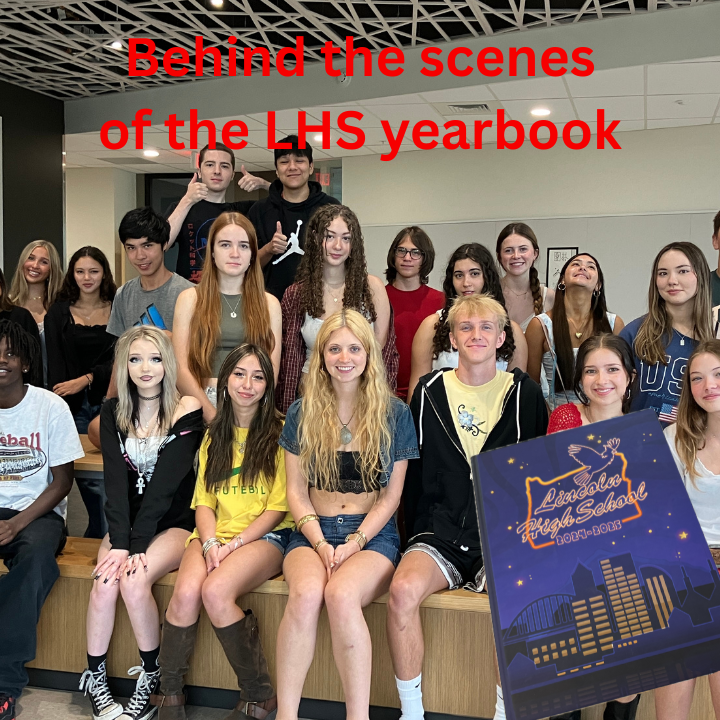Lincoln community reacts to new weekly schedule proposal from Portland Association of Teachers
The Portland Association of Teachers is suggesting that one school day each week be made either three hours of in-person tutorial time or completely asynchronous, with the rest of the day devoted to teacher planning time. Students, teachers and parents have mixed opinions on this proposal.
December 15, 2021
The Portland Association of Teachers (PAT) is making waves with their recent Workload Proposal, which they say will relieve the stress of teachers and accommodate more students’ needs.
For high school students, the PAT is suggesting that one school day each week be made either three hours of in-person tutorial time or completely asynchronous, depending on the students needs. The rest of the day would be devoted to teacher planning time.
The Workload Proposal contains 13 propositions that teachers want to be met by the Portland Public School Board. These include staff meeting schedules, contract-teacher evaluations and special education plans.
The most controversial of these proposals is number eight, which suggests the layout of the new school schedule they would like implemented.
“All-eight period [Fridays] shall become in-person FLEX/tutorial instruction days with asynchronous options for students who do not need additional support,” the proposal reads. “During those days, students will have a full day of access to educators. For educators, three hours of the day shall be FLEX/tutorial time (either a.m. or p.m.), and the remainder of the day shall be educator-directed planning time.”
Students who decide they don’t need additional support will be presented with the option of not coming to the building on Fridays.
Lincoln students shared their opinions on the PAT proposal by filling out a survey conducted by the Cardinal Times. Of the 67 students who took the survey, the majority (64.2%) were in favor of the proposal, while 35.8% were in opposition.
Senior Demetri Kehoe is against the Board’s proposal. He is concerned by the decrease in instructional time on the plan.
“An (asynchronous school day) would severely limit the learning of students, causing more confusion in class. It was mentioned that this would cut back on 93 hours of learning, which would have a huge impact on education,” he said. “I understand that there are many complaints about the all-eight period Fridays, but turning it into an asynchronous day wouldn’t solve any problems. It would present more.”
Sophomore Riley Yoo is in favor of the Board’s proposal. He believes it would be beneficial to have self-initiated work time.
“I feel like an online system for Fridays, while having two longer in-person classes per week, would be the optimal schedule for school. Fridays would be less stressful, and you could…still work independently and get schoolwork done,” he said. “Even if you aren’t too productive on those Fridays, you are still assigned work that would be due the next week, and so it forces more independent discipline. Furthermore, students who are productive online, and prefer a more self-taught or individual learning style, are able to get a lot done during these Fridays.”
Freshman Sophia Tolme is against the proposal. She expressed concerns about how students would use this extra time.
“A very small percentage of people would actually use the free time to do their homework. Because it’s on a Friday especially, kids just want to go out and have fun with their friends for the whole afternoon. They would use the study time as break time,” she said.
Junior Lola Sullivan wants what is best for teachers and students.
“I believe that we need more time to complete work, check in with teachers, and rest. We don’t have enough time to complete a full lesson on all-eight period days, and it feels like we don’t really learn anything. I believe this time would be better utilized by giving us a day to complete work and catch up,” she said.
The PAT reasons that the COVID-19 pandemic has interfered dramatically with the last year and a half of education. Their proposal says the pandemic has led to a “staffing crisis” and, in turn, “requires adaptations to how our schools function at this time.”
According to an article published in The Oregonian, 9% of the 990 instructional hours required by Oregon state law [would be] canceled for high schoolers with this new proposal. The Education Commission of the States shows that compared to other states, Oregon has one of the lowest required schooling hours.
“We can have some conversations about what the impact on the instructional hours would be. We can get the calculator out and figure that out,” Lincoln social studies teacher and the PATs chair of the union bargaining unit, Steve Lancaster told The Oregonian, “It’s the [PAT’s] belief that the number of instructional hours that would fall below the 990 hours of requirement may be close.”
In an email exchange with The Oregonian, District Deputy Superintendent Shawn Bird said that converting in-person instruction to asynchronous time may create inequities.
“We believe direct contact with teachers is the most beneficial for our students, particularly since they were in comprehensive distance learning for an extended period of time,” he wrote.
Students and teachers aren’t the only people who have mixed views on the proposal. Lincoln parent Eric Happel recognizes the challenges caused by online learning, but he does not believe that the PAT proposal will address them properly. Happel believes that the majority of students need to be in-person to maximize their learning progress, arguing that the damages of the new PAT proposal outweigh the benefits.
“[A shorter time in the building means] education loss with less curriculum taught, mental health challenges, less time for kids and teachers to enjoy learning and socializing, a message to kids that their struggles are less important than adults and logistical and/or lost income for some parents that don’t have work flexibility,” he said.
Happel proposed some alternatives that he thinks could benefit students, parents, and teachers alike.
“We have heard from several teachers that, in order to decrease their stress, they need more time with all students generally, not less,” he said. “Building in more FLEX periods would help to bring back that valuable one-on-one time teachers need to help students who may benefit from additional guidance.”
Students, parents, and teachers have many strong and differing opinions on the new PAT proposal. The PAT hopes to come to a resolution on the proposition through bargaining sessions with the district, which are planned to take place on Dec. 16 and 17.




